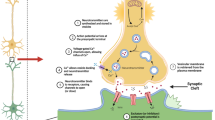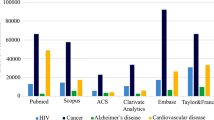Abstract
Cholinesterase enzyme family consists of acetylcholinesterase (AChE, 3.1.1.7), the major enzyme responsible for hydrolysis of acetylcholine at cholinergic synapses, and butyrylcholinesterase (BChE, 3.1.1.8) a detoxification enzyme of plasma. Statins are cholesterol-lowering medications utilized as protective medicaments in stroke and Alzheimer’s disease, which cholinesterases are associated with. Thus, in this study, we characterized the inhibitory effects and mechanisms of common statins, rosuvastatin, atorvastatin, simvastatin and lovastatin, on human erythrocyte AChE and purified serum BChE using in vitro and in silico methods. Kinetic assays identified statins as selective non-competitive inhibitors of human serum BChE. The IC50 and Km values were found as 194.7 ± 55.2 µM and 1.03 ± 0.2 µM for rosuvastatin, 492.5 ± 55.1 µM and 7.2 ± 0.3 µM for atorvastatin, 14.2 ± 0.3 µM and 202.7 ± 23.2 µM for lovastatin, and 17.6 ± 0.1 µM and 207.2 ± 13.2 µM for simvastatin, respectively. The compounds did not display considerable inhibition against AChE. Molecular docking predicted good affinity and strong interactions with the BChE active site for atorvastatin and rosuvastatin. Current study identifies rosuvastatin as the most specific and selective inhibitor of human BChE among the tested statins. As selective inhibitors of BChE statins have the potential to be re-evaluated as medicaments due to their pleiotropic effects.





Similar content being viewed by others
Data Availability
The authors declare that the data supporting the findings of this study are available within the article.
Abbreviations
- AChE:
-
acetylcholinesterase
- BChE:
-
butyrylcholinesterase
- ATOR:
-
atorvastatin
- LOVA:
-
lovastatin
- ROSU:
-
rosuvastatin
- SIM:
-
simvastatin
- BBB:
-
blood-brain barrier
References
Soreq H, Seidman S (2001) Acetylcholinesterase-new roles for an old actor. Nat Rev Neurosci 2(4):294–302
Lockridge O (2015) Review of human butyrylcholinesterase structure, function, genetic variants, history of use in the clinic, and potential therapeutic uses. Pharmacol Ther 148:34–46
Darvesh S, Hopkins DA, Geula C (2003) Neurobiology of butyrylcholinesterase. Nat Rev Neurosci 4(2):131–138
Bodur E, Cokugras AN, Tezcan EF (2001) Inhibition effects of benactyzine and drofenine on human serum butyrylcholinesterase. Arch Biochem Biophys 386(1):25–29
Ryhanen RJ (1983) Pseudocholinesterase activity in some human body fluids. Gen Pharmacol 14(4):459–460
Jain R, Kutty KM, Huang SN, Kean K (1983) Pseudocholinesterase/high-density lipoprotein cholesterol ratio in serum of normal persons and of hyperlipoproteinemics. Clin Chem 29(6):1031–1033
Iwasaki T, Yoneda M, Nakajima A, Terauchi Y (2007) Serum butyrylcholinesterase is strongly associated with adiposity, the serum lipid profile and insulin resistance. Intern Med 46(19):1633–1639
Bulut S, Bodur E, Colak R, Turnagol H (2013) Effects of conjugated linoleic acid supplementation and exercise on post-heparin lipoprotein lipase, butyrylcholinesterase, blood lipid profile and glucose metabolism in young men. Chem Biol Interact 203(1):323–329
Valle-Martos R, Valle M, Martos R, Cañete R, Jiménez-Reina L, Cañete MD (2021) Liver enzymes correlate with metabolic syndrome, inflammation, and endothelial dysfunction in Prepubertal Children with obesity. Front Pediatr 16:9:629346
Xing S, Li Q, Xiong B, Chen Y, Feng F, Liu W, Sun H (2021) Structure and therapeutic uses of butyrylcholinesterase: application in detoxification, Alzheimer’s disease, and fat metabolism. Med Res Rev 41(2):858–901
Schachter M (2005) Chemical, pharmacokinetic and pharmacodynamic properties of statins: an update. Fundam Clin Pharmacol 19(1):117–125
Kosowski M, Smolarczyk-Kosowska J, Hachuła M, Maligłówka M, Basiak M, Machnik G, Pudlo R, Okopień B (2021) The Effects of statins on neurotransmission and their neuroprotective role in Neurological and Psychiatric Disorders. Molecules 26(10):2838
Lerouet D, Marchand-Leroux C, Besson VC (2021) Neuropharmacology in traumatic brain injury: from preclinical to clinical neuroprotection? Fundam Clin Pharmacol 35(3):524–538
Haidar MK, Timur SS, Kazanci A, Turkoglu OF, Gürsoy RN, Nemutlu E, Sargon MF, Bodur E, Gök M, Ulubayram K, Öner L, Eroğlu H (2020) Composite nanofibers incorporating alpha lipoic acid and atorvastatin provide neuroprotection after peripheral nerve injury in rats. Eur J Pharm Biopharm 153:1–13
Muacević-Kataneca D, Bradamante V, Reinec Z, Sucić M, Poljicanin T, Busljeta I, Metelko Z (2005) Clinical study on the effect of simvastatin on butyrylcholinesterase activity. Arzneimittelforschung 55(5):271–275
Darvesh S, Martin E, Walsh R, Rockwood K (2004) Clin Biochem 37(1):42–49
Pytel E, Bukowska B, Koter-Michalak M, Olszewska-Banaszczyk M, Gorzelak-Pabiś P, Broncel M (2017) Effect of intensive lipid-lowering therapies on cholinesterase activity in patients with coronary artery disease. Pharmacol Rep 69(1):150–155
Cibicková L, Palicka V, Cibicek N, Cermáková E, Micuda S, Bartosová L, Jun D (2007) Differential effects of statins and alendronate on cholinesterases in serum and brain of rats. Physiol Res 56(6):765–770
Gelosa P, Castiglioni L, Camera M, Sironi L (2020) Repurposing of drugs approved for cardiovascular diseases: opportunity or mirage? Biochem Pharmacol 177:113895
Samant NP, Gupta GL (2021) Novel therapeutic strategies for Alzheimer’s disease targeting brain cholesterol homeostasis. Eur J Neurosci 53(2):673–686
Bodur E (2010) Human serum butyrylcholinesterase interactions with cisplatin and cyclophosphamide. Biochimie 92(8):979–984
Ellman GL, Courtney KD, Andres V Jr, Feather-Stone RM (1961) A new and rapid colorimetric determination of acetylcholinesterase activity. Biochem Pharmacol 7:88–95
Lu C, Wu C, Ghoreishi D, Chen W, Wang L, Damm W et al (2021) OPLS4: improving Force Field Accuracy on challenging regimes of Chemical Space. J Chem Theory Comput 17(7):4291–4300
Chalupova K, Korabecny J, Bartolini M, Monti B, Lamba D, Caliandro R et al (2019) Novel tacrine-tryptophan hybrids: multi-target directed ligands as potential treatment for Alzheimer’s disease. Eur J Med Chem 168:491–514
Berman HM, Westbrook J, Feng Z, Gilliland G, Bhat TN, Weissig H et al (2000) The Protein Data Bank. Nucleic Acids Res 28(1):235–242
Sastry GM, Adzhigirey M, Day T, Annabhimoju R, Sherman W (2013) Protein and ligand preparation: parameters, protocols, and influence on virtual screening enrichments. J Comput Aided Mol Des 27(3):221–234
Rosenberry TL, Brazzolotto X, Macdonald IR, Wandhammer M, Trovaslet-Leroy M, Darvesh S et al (2017) Comparison of the Binding of Reversible Inhibitors to Human Butyrylcholinesterase and Acetylcholinesterase: A Crystallographic, Kinetic and Calorimetric Study.Molecules. ;22(12)
Author information
Authors and Affiliations
Corresponding author
Ethics declarations
Conflict of Interest
The authors declare that they have no conflicts of interest with the contents of this article, financial or otherwise.
Additional information
Publisher’s Note
Springer Nature remains neutral with regard to jurisdictional claims in published maps and institutional affiliations.
Electronic Supplementary Material
Below is the link to the electronic supplementary material.
Rights and permissions
Springer Nature or its licensor (e.g. a society or other partner) holds exclusive rights to this article under a publishing agreement with the author(s) or other rightsholder(s); author self-archiving of the accepted manuscript version of this article is solely governed by the terms of such publishing agreement and applicable law.
About this article
Cite this article
Atay, M.S., Sari, S. & Bodur, E. Molecular and Computational Analysis Identify Statins as Selective Inhibitors of Human Butyrylcholinesterase. Protein J 42, 104–111 (2023). https://doi.org/10.1007/s10930-023-10090-z
Accepted:
Published:
Issue Date:
DOI: https://doi.org/10.1007/s10930-023-10090-z




